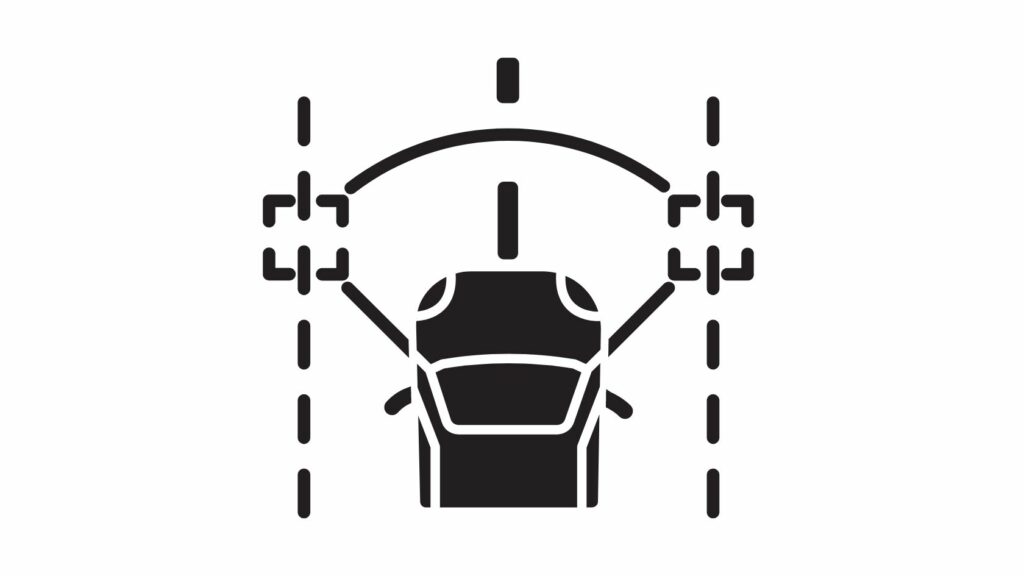
Lane Assist is part of a safety feature in modern cars and its primary function is to assist in maintaining a vehicle within its lane. However, many motorists are confused about its impact on the fundamental steering aspect. Does Lane Assist Affect Steering Wheel?
This is what we will explore in this blog post. You will know the role of Lane Assist in steering control and its implications on driving dynamics.
You will also learn about the mechanics behind this technology to explore how it optimizes the overall driving experience.
Does Lane Assist Affect Steering?
Yes, lane assist affects steering because it can provide corrective steering input to keep your car centered in its lane.
The system uses cameras or sensors to detect lane markings on the road. If the system detects that your car is drifting out of its lane without a turn signal activated, it will trigger a warning.
In some systems, if the warning is ignored and the car continues to drift, the lane assist system may take over and gently steer the car back into the lane. This is usually done by applying a slight torque to the steering wheel.
However, the amount of steering input the system can provide is usually limited. If you are making a sharp turn or trying to avoid an obstacle, you will need to override the system and steer the car yourself.
Understanding Lane Assist and How it Works
Lane Assist (LA) technology is playing an increasingly important role in the advancement of driver assistance systems. It contributes significantly to road safety and reduces the risk of lane departure accidents.

The lane assist technology helps drivers in maintaining proper lane discipline, offering a valuable layer of support, especially during long journeys or periods of fatigue.
From a functionality perspective, LA systems typically employ a combination of cameras and sensors to detect lane markings on the road surface.
These cameras or sensors continuously monitor the car’s position relative to the lane boundaries.
When the system detects an unintentional drift toward a lane marking without an activated turn signal, it triggers a warning, usually consisting of visual and/or audible alerts.
More advanced systems can also provide gentle corrective steering input to nudge the vehicle back into its lane. This steering intervention is achieved through electric motors integrated into the steering column, applying a slight torque to counter the drift.
The core of LA’s interaction with steering lies in its ability to analyze sensory data and translate it into corrective actions. It monitors steering angle, speed, and lane position to determine the appropriate intervention level.
The intervention can be in the form of visual and haptic alerts, vibrations, or active torque to steer the vehicle back into the lane.
It’s crucial to remember that LA systems are designed to assist, not replace, driver input. The steering wheel remains under the driver’s control, and they can easily override any automated intervention.
It’s important to remember that lane assist is a driver assistance system and not a self-driving feature. Even with the steering input by Lane Assist, you are still responsible for controlling the car and you should always be aware of your surroundings.
Safety Benefits of Lane Assist
Studies have shown that LA technology offers several safety benefits:
LA systems detect unintentional drifts and prompt corrective action. This helps prevent vehicles from crossing lane markings, significantly reducing the risk of head-on collisions or sideswipes.
The system’s warnings can serve as a wake-up call for drivers experiencing fatigue or distraction, reminding them to refocus on the road.
LA promotes better lane adherence, especially on long journeys or monotonous stretches of highway, where lane drift is more common.
Disadvantages of Lane Assist
While Lane Assist (LA) offers notable safety benefits, there are also some potential drawbacks to consider:
LA systems rely on sensors and cameras to detect lane markings. These can be unreliable in poor weather conditions like rain, snow, or fog, where markings are obscured.
The system might misinterpret road features like shadows or merging lanes as lane departures, triggering unnecessary warnings or failing to intervene when needed.
The presence of LA might create a false sense of security, encouraging riskier driving behavior like excessive speed or distraction.
LA systems typically provide gentle corrective steering, which might be insufficient in sharp turns or emergency situations, requiring driver intervention.
Over-reliance on LA can lead to complacency and decreased driver attentiveness, potentially making them slower to react to unexpected situations.
While rare, technical failures in the LA system could lead to unintended steering interventions or system shutdowns, posing potential safety risks.
The Impact of Lane Assist on Steering Control
As mentioned earlier, Lane Assist (LA) technology undeniably influences steering control by offering assistance while simultaneously introducing new factors to consider.
In some situations, LA actively applies torque to the steering wheel, correcting unintentional lane drifts. This alters the driver’s feel of the road and requires adaptation.
Many LA systems provide visual or haptic feedback, prompting the driver to adjust their steering. This indirect influence still affects control dynamics.
LA can reduce the frequency and intensity of steering adjustments needed from the driver, impacting their engagement and feel for the road.
Differences between Lane Assist Intervention and Manual Steering
LA systems operate on pre-programmed algorithms, potentially reacting slower than skilled drivers in dynamic situations.

While generally accurate, LA might struggle with complex lane markings or sudden maneuvers, requiring driver override for precise control.
Manual steering offers direct feedback on road conditions and vehicle response, while LA’s feedback is filtered through the system’s interpretation.
It is important to understand that despite assistance, the driver remains ultimately responsible for the vehicle’s control and must be prepared to override LA at any time.
Effective use of LA requires a balance between trusting the system when appropriate and maintaining attentiveness and readiness to take control promptly.
Optimizing Your Driving Experience with Lane Assist Technology
Lane Assist (LA) offers valuable support, but like any tool, maximizing its benefits requires responsible use and understanding. One of the ways for maximization is calibration.
Regular calibration ensures LA sensors and cameras accurately detect lane markings, leading to reliable interventions and reduced false positives/negatives.
Refer to your car’s manual for recommended calibration intervals, which can be after windshield replacements, certain repairs, or periodically.
Calibration procedures vary between manufacturers but often involve driving on a straight, well-marked road following specific instructions.
Safety Tips and Best Practices for Using Lane Assist Effectively
- Recognize that LA is an assistance system, not a self-driving feature. Remain alert, focused, and ready to take over at any moment.
- Continuous reliance can reduce your attentiveness and hinder essential steering skills. Use LA judiciously, especially in challenging conditions.
- Familiarize yourself with your specific LA system’s features, settings, and limitations through the owner’s manual or manufacturer information.
- Practice overriding LA interventions smoothly and safely, ensuring you’re comfortable regaining control when needed.
- Consider disabling LA in stop-and-go traffic, tight corners, or poorly marked roads where its interventions might be confusing or unnecessary.
Does Lane Assist Turn the Steering Wheel?
Yes, Lane Assist systems can indeed turn the steering wheel. Lane Assist is designed to help prevent unintentional lane departure.
Some advanced Lane Assist systems are capable of actively steering the vehicle back into its lane based on the use of sensors, cameras, and sometimes actuators.
The system monitors lane markings and the vehicle’s position within the lane. If it detects an unintended drift, it can apply steering input to guide the vehicle back into the center of the lane.
However, the extent of steering intervention can vary depending on car models and Lane Assist implementations.
Some systems may provide gentle steering corrections, while others may offer more assertive interventions, depending on the manufacturer’s design and the driver’s preferences.
Does Lane Assist Affect Wheel Alignment?
No, Lane Assist does not directly affect wheel alignment. However, there are some indirect connections to consider.
Misaligned wheels can alter the angle of your car, throwing off the readings from sensors and cameras used by Lane Assist. This can lead to inaccurate lane detections, false alarms, or potentially missed interventions.
Depending on the specific system and manufacturer, some Lane Assist features might require recalibration after a wheel alignment to ensure they function properly with the adjusted vehicle positioning.
While very rare, a malfunctioning Lane Assist system could also theoretically provide incorrect steering corrections, putting undue stress on specific components and potentially contributing to misalignment over time. However, this is highly unlikely and would manifest as a wider issue with the system itself.
Remember to always consult your vehicle’s owner’s manual for specific information regarding Lane Assist and wheel alignment recommendations.
Final thoughts
The impact of LA on steering control is multifaceted. While it offers valuable assistance, it’s crucial to remember that it is a tool, not a replacement for skilled and responsible driving.
Understanding its capabilities and limitations, adapting your driving style accordingly, and maintaining control is essential for maximizing the benefits of LA while ensuring safe and confident driving.

